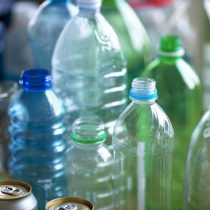
Consumer awareness of environmental hazards due to plastics, especially in food and beverage packages, has reached the limit. Although plastic provides a relatively inexpensive wrapper that protects flavors and prolongs food freshness, the sheer amount of unrecycled plastic bottles floating in the ocean and reaching beaches is causing the public to react and call for changes.
For manufacturing companies in the food and beverage industry, this means enormous pressure to review their packaging methods, their strategy plan to market and get new partners. Fortunately, there are modern software solutions that can help in managing these factors, starting with research and development up to and feedback from customers.
Widespread transformation
The distance from the plastic is a mandate of the “back to the blackboard” type. A lot of factors will be impacted, from the size of packaging to labeling and shipping, as manufacturing companies begin to migrate to packaging with greener materials. Materials such as glass, can/aluminium and paper will resurface, and single-use plastics will disappear.
Costs and margins will also be affected. Manufacturing companies must determine which premium consumers are willing to pay for alternative forms of packaging and which meals they are willing to sacrifice to help lessen the environmental impact their favorite foods and beverages cause.
Reasons for change
Business Insider recently reported on consumer complaints. Plastic use has increased 20 times in the last 50 years and continues to increase. In the world, consumers do not reuse or recycle plastics as much as they could, causing them to go to landfills. The plastics in the landfills are disintegrated into microplastics, which pass into the tablewater and the food chain, as a consequence? microplastics are harmful to humans, animals and plants.
Should manufacturing companies modify packaging and packaging?
Food and beverage manufacturing companies have a huge job ahead of them. Consumers expect changes and increasingly make purchasing decisions based on brand social responsibility.
Unilever, for example, recently conducted a study that revealed that a third of consumers now buy from businesses considering their social and environmental impact. The study highlights that there is an unprecedented opportunity for companies that excel in the sustainable sector. More than one, out of 5 people surveyed (21%), select brands if labels and marketing is clearing their sustainable attitude. This represents a potential opportunity of more than $1 trillion.
Companies that commit to change
Whether companies are motivated by a desire to “do the right thing” or to gain the loyalty of sustainability supporters, several are engaging in environmentally friendly packaging and processes.
For example, Aramark food and service companies will significantly reduce single-use plastics by 2022, and start with sorbets, cups and soup dishes. Kraft Heinz already announced last July that all its packaging will be 100% recyclable, reusable and compostable by 2025. Coca-Cola announced that it would recycle a bottle or can for every one it sells by 2030. In 2018, PepsiCo made a $10 million investment in a Recycling Agreement to launch “All In On Recycling,” a company-wide challenge to raise $25 million to improve recycling infrastructure.
How technology helps
Market-savvy manufacturing companies will begin to transform their packaging strategies for better alignment with customer expectations. As conscious global citizens, executives will also recognize environmental responsibility.
Start with Research and Development
Product Lifecycle Management (PLM) solutions help manufacturing companies track and monitor the product lifecycle, starting with Research and Development and continuing with product testing and pricing strategies.
A modern PLM solution will help your organization simplify the complexity of redesigning packaging. New packaging designs can be managed as a product launch with step-divided tasks for easier project management. The tool also empowers designated individuals to access packaging specifications, formulas, and research data on the needs of transfers to be informed in the transition process and to project the dates of new releases.
Collaboration tools can also help individuals share documents, record strategic decisions, and discuss prices, go-to-market tactics between different departments by avoiding silos.
Recipe and Baches, the specifications may have to be adjusted to accommodate changes in packaging and portion sizes and how the product is prepared. Removing plastic caps can affect product life, freshness and appearance of food, requiring a change in recipes. ERP solutions developed specifically for the food and beverage industry have the necessary functionalities to make these adjustments.
After: resources and the financial impact
End-to-end visibility achieved by ERP solutions are essential for tracking and quantifying the holistic impact of change on packaging. A reliable version helps monitor progress and make good packaging decision-making.
Connected Supply Chain Network: This will be more important than ever, as manufacturing companies will likely need to look for new sources for packaging according to new needs, from for product, caps, new types of materials, new containers for shipments and transportation to avoid breakage or temperature control. A modern solution for supply chain management is valuable for new supplier relationships and deciding on new shipping routes.
Predictive Analysis will be extremely useful to the extent that manufacturing companies consider the financial impact of alternative packaging options and understand the impact on profitability. Changes to internal processes, such as adapting machinery and the ramifications of shipments, should be carefully considered. Managers will want to compare “if” scenarios as they select options. Modern analytics, powered by artificial intelligence and machine learning, will be critical in designing the new strategy to align with the prices consumers want to pay.
Finally, reaching the customer
Solutions for customer relationship management can help track and support customer communications in marketing campaigns, focus groups and websites, which explain the company’s sustainability. Traceability and journey from origin to households are closely linked to sustainability and can be highlighted on the business website. The comprehensive customer experience can be enriched using online customer portals as well as e-commerce tools.





